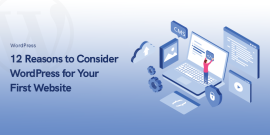The Role of WordPress in Revolutionizing Personal Health Monitoring with Wearable Devices in 2023
WordPress is a popular content management system that has been used to create a wide range of websites, including those related to healthcare and personal health monitoring. With the increasing popularity of wearable devices, such as fitness trackers and smartwatches, WordPress has become an important tool for individuals and healthcare professionals to monitor personal health data.
The Power of Integration: How WordPress is Revolutionizing Personal Health Monitoring with Wearable Devices.
One of the key benefits of using WordPress for personal health monitoring is its flexibility and customization options. With the ability to install various plugins and themes, users can easily integrate wearable device data into their WordPress website and tailor it to their specific needs. Additionally, WordPress offers a user-friendly interface that allows individuals to easily track and analyze their health data over time.
Furthermore, WordPress can also be used by healthcare professionals to monitor patient health data in real-time. This can be particularly useful for remote patient monitoring, where healthcare providers can monitor and track patients' health data from afar, providing timely interventions when necessary.
Overall, the integration of wearable devices and WordPress has the potential to revolutionize personal health monitoring, making it more accessible, convenient, and personalized.
We all know keeping tabs on our health is super important, right? But let's be real. It can be pretty tough. Between doctor's visits, trying to understand medical terms and the high costs are enough to make your head spin.
However, you can get wearable healthcare devices to keep track of your health. So, let's dive in and find out how this tech is changing the game for our health.
Imagine a world where the watch on your wrist could do more than just tell time or count steps. What if it could provide vital health data that your doctor could access in real time? That's the power of wearable healthcare devices.
When meshed with WordPress – a popular and user-friendly website platform – these devices can become a handy tool for tracking and managing your health.
This article will guide you through how this works, discussing how WordPress can collect and manage the data from your wearable device to help healthcare providers give you the best care possible.
We'll also touch on some potential challenges and how to solve them. So, dive in and explore the exciting intersection of wearable technology and WordPress in healthcare.
WordPress plays a pivotal role in the healthcare sector, bridging the gap between wearable healthcare devices and effective data management.
- Data Collection and Management: WordPress enables seamless integration with wearables, collecting vital health data in real-time. This information is then efficiently managed and stored, making it accessible for healthcare providers.
- Patient Engagement: WordPress supports the creation of patient portals, allowing you to monitor your health, access medical records, and actively participate in your care.
- Information Dissemination: Healthcare providers use WordPress to share crucial health information, updates, and resources, helping you stay informed and healthy.
In essence, WordPress empowers healthcare with its robust functionality, fostering better patient engagement, data management, and information dissemination.
The Benefits of Wearable-Wordpress Synergy
Beyond just monitoring your health, the synergy between your wearable device and WordPress can offer you a myriad of benefits.
Personalized Health Insights
With the data from your wearable, WordPress creates personalized health posts or reminders based on the patient’s unique needs. You're not just getting generic health tips but ones tailored for you.
Greater Engagement
WordPress's interactive features coupled with your wearable's data can boost your engagement. You're more likely to stick with a health regimen when you can track your progress visually.
Ease of Access
Your health information, directly from your wearable, can be readily accessed on your WordPress site. It's a one-stop-shop for your health needs.
Integrating Wearable Devices With WordPress
WordPress is a user-friendly platform with an intuitive interface, making it easy to manage and update your website. WordPress even offers SEO plugins to enhance your site's visibility.
Plus, it's mobile-friendly, ensuring your site looks great on any device. This is particularly important as more people use smartphones to access healthcare information.
Lastly, with WordPress, you can regularly update your site with relevant content, establishing your authority in the healthcare industry.
Advantages of SEO-Friendly Structure
An SEO-friendly structure can significantly improve your healthcare website's visibility online.
WordPress's clean coding and structured setup make it easy for search engines to crawl and index your site, thereby boosting your ranking.
Plus, with the host of SEO plugins, you can further enhance your website's SEO capabilities. These plugins allow for keyword optimization, meta tag management, and XML sitemap generation, all of which are essential for effective SEO.
You also don't need to be a tech whiz to navigate these features. You can follow the WordPress SEO best practices to optimize a user-friendly site that attracts more visitors and improves patient engagement.
Emphasis on Mobile-Friendly Design
More people are using their phones to access health information, so ensure your site is responsive.
WordPress offers themes that adjust seamlessly to different screen sizes. This means your site will look great and function properly whether it's viewed on a smartphone, tablet, or computer.
A mobile-friendly design not only improves user experience but also boosts your site's search engine rankings. Google, for instance, prioritizes sites that are mobile-optimized. So, don't overlook this aspect.
Leveraging Content Management Capabilities
Regularly managing and updating your website's content is crucial, and WordPress makes it easy for you to do so. With its intuitive dashboard, you can quickly publish new pages and posts. It's even simple to customize your content for SEO purposes, ensuring your website gets noticed.
WordPress is also great for managing different types of content. Want to share patient testimonials? Easy. Need to publish informative healthcare articles? No problem.
The platform is designed for regular content updates, which are vital for improving search engine rankings and establishing authority in the healthcare field.
Utilizing WordPress Plugin Library
WordPress’ vast library, brimming with over 58,000 free plugins, allows you to enhance your website's functionality and improve its SEO.
Ranging from social media integration to advanced analytics, these plugins enable you to customize and optimize your site to meet your specific healthcare device needs.
Security plugins ensure patient data protection and HIPAA compliance, making WordPress a reliable choice.
The ease of integration of these plugins makes handling your website a breeze, even if you aren't tech-savvy.
Ensuring Robust Security Measures
As you integrate wearable devices into your healthcare services, securing patient data becomes paramount.
WordPress employs multiple layers of protection, including automatic updates with essential security patches, and additional security plugins. These tools are invaluable for preventing unauthorized access and protecting sensitive information.
As mentioned previously, WordPress's commitment to security aligns with HIPAA compliance, ensuring patient data stays confidential and secure.
Achieving Improved Patient Care With WordPress Integration
These wearable devices track health metrics like heart rate, sleep patterns, and physical activity. By syncing this data with your WordPress site, you can offer personalized healthcare advice to your patients.
Imagine this – your patient's wearable device detects high blood pressure. It instantly syncs the data with your platform. You're notified and can advise the patient to take immediate measures. It's proactive healthcare at its best.
Overcoming Challenges in Integration
While integrating wearable devices with WordPress offers numerous benefits, it's important to address the challenges you'll face, helping ensure a successful implementation.
You might encounter compatibility issues, as not all wearable devices and WordPress themes are designed to work seamlessly together. In such cases, custom coding might be required.
The need for real-time data transfer can also pose a hurdle, demanding high-speed and reliable connectivity.
Security is another concern, as transmitting sensitive health data needs stringent safety measures.
To overcome these challenges, it's crucial to choose wearables and WordPress themes that are known for their compatibility, prioritize the provision of robust internet connectivity, and implement solid security protocols.
Understanding Wearable Healthcare Devices
While you might be familiar with wearable devices such as fitness trackers and smart watches, and sleep tracking apps, it's crucial to understand that wearable healthcare devices offer far more advanced and targeted health monitoring capabilities.
From glucose monitors for diabetics to wearable ECG monitors that keep a constant eye on heart rhythms, these devices provide real-time data that doctors can use to make informed decisions about your health.
There's also the ability for these devices to alert you to potential health issues before they become serious. It's clear that this tech isn't a fad, it's a valuable tool in managing and improving health.
The Role of WordPress in Healthcare
What Is Wearable Healthcare Technology?
Wearable healthcare technology, in the simplest terms, refers to electronic devices that individuals wear or implant on their bodies to monitor and record their health parameters.
They represent a fusion of advanced technology with medical and health science, bringing diagnostic and monitoring capabilities directly to the wearer's wrist, clothing, or even under their skin.
Historical Evolution and Current State of Wearable Healthcare Technology
The genesis of wearable technology, interestingly, finds its roots not in healthcare but in computation and time-keeping.
The Pulsar Calculator Watch from 1975 was the first entrant in the modern wearable space, though it was primarily a technological novelty rather than a health tool.
The late 2000s marked the arrival of advanced wearable devices, such as Fitbit's fitness trackers and Apple's smartwatches, that could monitor heart rate and physical activity.
Following that, we saw an explosion of innovation, producing wearables capable of tracking a multitude of health metrics.
For example, we now have smart glasses for augmented reality therapy, wearable ECG monitors, and even smart patches that can monitor vital signs continuously.
Importance of Wearable Devices in Modern Healthcare
Wearable devices have an indisputable and increasingly significant role in modern healthcare. They empower individuals by giving them control over their health data, encouraging proactive healthcare management.
These devices, with their ability to continuously monitor health metrics, provide invaluable data that was previously difficult or even impossible to gather.
For instance, sleep quality or irregular heartbeat incidents can be tracked accurately over a long duration, providing doctors with a detailed health profile for better diagnosis and treatment.
Examples of Wearable Devices in Healthcare
Fitness Trackers
Fitness trackers, also known as activity trackers, are wearable devices that monitor and record physical activity patterns. These gadgets typically count steps, measure distance traveled, and calculate calories burned.
More advanced models even monitor heart rate and sleep patterns.
Fitness trackers are revolutionizing personal health monitoring by making people more conscious of their physical activity levels.
This awareness often translates into healthier lifestyle choices, like taking the stairs instead of the elevator or making time for regular exercise. They transform fitness from a nebulous concept into measurable, achievable goals.
Heart Health Monitoring Devices
Heart health monitoring devices have proven to be game-changers in the realm of personal health management.
They're equipped with sensors and advanced technology to record and analyze a variety of heart-related data, from heart rate and rhythm to blood pressure and oxygen levels.
These devices provide real-time feedback, helping individuals better understand their heart health, detect irregularities, and even potentially prevent serious cardiovascular events.
Now, a prime example of such technology is the Cardi Health app. Cardi Health devices are cutting-edge wearable technologies designed to monitor cardiovascular health.
They specialize in tracking heart rate, blood pressure, and other vital signs linked to the cardiovascular system.
Sleep Trackers
Sleep trackers are wearable devices that monitor various parameters during sleep, such as heart rate, breathing patterns, and movements. They provide detailed insights into the quality and quantity of an individual's sleep.
By offering a comprehensive analysis of sleep patterns, these trackers are revolutionizing personal health monitoring.
They help users understand their sleep quality, identify sleep disorders like sleep apnea, and make necessary adjustments for better sleep hygiene, which is critical for overall health and well-being.
Glucose Monitoring Devices
Glucose monitoring devices are wearables designed to track blood glucose levels continuously. They are especially useful for people with diabetes who need to monitor their glucose levels regularly.
These devices have revolutionized personal health monitoring for diabetics. They provide real-time glucose levels, alert users when their glucose levels are too high or too low, and keep a detailed record for better diabetes management.
This continuous and non-invasive monitoring can significantly improve the quality of life for people with diabetes.
Pros and Cons of Wearable Technology in Healthcare
Pros:
- Increased Self-Awareness: Wearable tech gives you direct feedback about your health. It's like having a mini check-up every day. You can track your heart rate, sleep, steps, and more. This helps you understand your body better.
- Prevention and Proactive Health Management: These devices can spot health issues early. For example, some watches can alert you about an irregular heartbeat. This can help catch problems before they get serious.
- Accessibility and Convenience: Wearable tech is easy to use. You wear it like a watch or a band. It works around the clock, collecting data about your health. You can check your stats anytime, anywhere.
Cons:
- Privacy and Security Concerns: These devices collect a lot of personal data. There's a risk of this data being stolen or misused.
- Data Accuracy: Not all wearables are 100% accurate. Sometimes, they may give incorrect readings. It's essential to use these devices as a guide, not a diagnosis tool.
- Over-Reliance and Health Anxiety: It's easy to become too dependent on these devices. Some people might worry too much about their health stats. This can lead to unnecessary stress and anxiety. It's crucial to balance tech use with common sense and doctor's advice.
Importance of Web Presence for Wearable Healthcare Tech Providers
In the digital age, a strong web presence is a must for healthcare tech providers. Interactive features like videos and user forums enhance user experience and understanding.
Moreover, a strong online presence, particularly through an authoritative and informative website, offers a platform to showcase expertise, share knowledge, and interact with users.
This not only builds trust but also fosters a relationship of mutual respect and understanding.
Let's take the example of digital healthcare marketing, which has proven to be a cost-effective alternative to traditional marketing channels.
Leveraged effectively, it can dramatically enhance the communication between providers and patients, boost online visibility, and consequently drive more business.
The right blend of valuable content, user-friendly design, and search engine optimization can position a healthcare provider as a trusted authority in the field, encouraging more people to use their services.
Conclusion
From tracking our fitness to alerting us about potential health problems, wearable devices are our own personal health companions. And with the help of great websites that guide us, using this tech has never been easier.
In conclusion, the integration of wearable devices with WordPress has the potential to transform personal health monitoring.
With the help of customizable themes and plugins, individuals can easily track and analyze their health data, while healthcare professionals can remotely monitor patients' health in real-time.
This integration has made personal health monitoring more accessible, convenient, and personalized, allowing individuals to take a more proactive approach towards their health.
As technology continues to advance, we can expect to see further innovations in the field of personal health monitoring through the integration of wearable devices and WordPress.
Recommended Posts

Top 6 Free Windows Screen Recorders for Your Personal Blog
February 8, 2024

Marketing Tactics for WordPress Excellence in 2024
January 22, 2024

12 Reasons to Consider WordPress for Your First Website in 2024
January 17, 2024